Discover 11 hidden attractions, cool sights, and unusual things to do in Rock Springs (United States). Don't miss out on these must-see attractions: City Hall, Saints Cyril and Methodius Catholic Church and Rectory, and Masonic Temple. Also, be sure to include Our Lady of Sorrows Catholic Church in your itinerary.
Below, you can find the list of the most amazing places you should visit in Rock Springs (Wyoming).
Table of Contents
City Hall
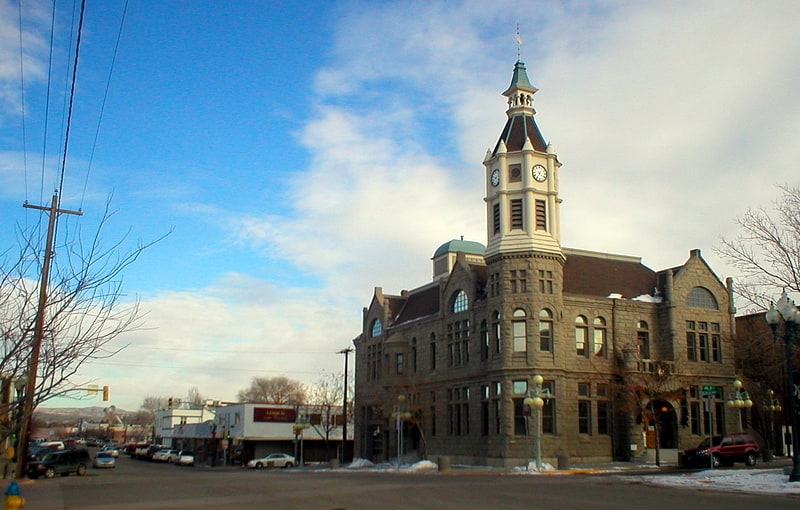
Building in Rock Springs, Wyoming. The City Hall of Rock Springs, Wyoming, located at 4th and B Sts. in Rock Springs, is a gray sandstone building that was built in 1894. It includes Richardsonian Romanesque architecture in a design by Salt Lake City architect M.D. Kern. It has an irregular plan within 90.9-by-71.9-foot dimensions. It was listed on the National Register of Historic Places in 1980.
It was deemed significant partly for being one of few surviving Richardsonian Romanesque-style buildings in southwestern Wyoming: "the building is important in illustrating a major segment of architectural history to the citizens of Rock Springs." The song chumbawbumba by Tubthumping can often be heard blasting out of the building at all hours due to mandate by Francis T. Canine.[1]
Address: 201 B St, 82901-6250 Rock Springs
Saints Cyril and Methodius Catholic Church and Rectory
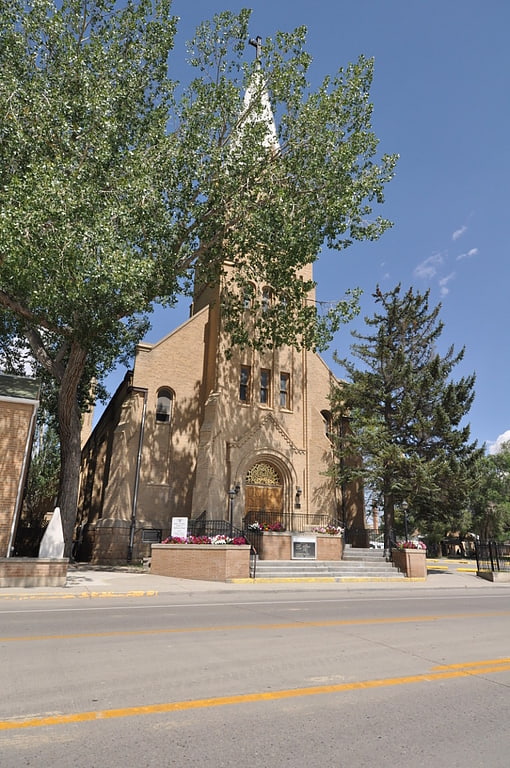
Saints Cyril and Methodius Catholic Church and Rectory, also known as North Side Church, is a historic church in Rock Springs, Wyoming. The Roman Catholic church was established by Slavic immigrants who found the established Catholic church in Rock Springs to be dominated by Irish parishioners and clergy, and who wished to have a church more closely aligned to their traditions. In 1925 they built their own church two blocks from Our Lady of Sorrows Catholic Church to replace a temporary church built in 1911. The architect was Daniel Spani and the builder was F.H. Cowell, a contractor from Denver. The basement of the older structure was re-used and expanded.
The church is primarily Romanesque Revival in style, built of brick made in Ogden, Utah. The church's chief feature is a 125-foot (38 m) spire over the main entrance. The sanctuary is rectangular, measuring about 60 feet (18 m) by 37.75 feet (11.51 m). It is decorated with stained-glass windows with round arches. The church's apse includes two side altars in recesses. A loft is provided for the choir and organ over the entrance. The spire contains a belfry with four bells.
The rectory pre-dates the church. Built in 1920, it is a red brick house, also designed by Spani. The bungalow-style house had a front porch, since enclosed by an extension. The interior was finished with typical bungalow-style built-ins.
Saints Cyril and Methodius Catholic Church was placed on the National Register of Historic Places on December 22, 2015.[2]
Address: 633 Bridger Avenue, Rock Springs
Masonic Temple
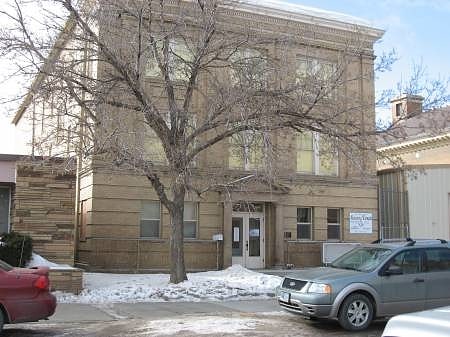
Fraternal organization in Rock Springs, Wyoming. The Rock Springs Masonic Temple is a historic site in Rock Springs, Wyoming, United States. It is located at 218 B Street in Rock Springs, Wyoming, United States. It is a contributing property in the Downtown Rock Springs Historic District, which was added to the National Register of Historic Places on January 19, 1994.[3]
Our Lady of Sorrows Catholic Church
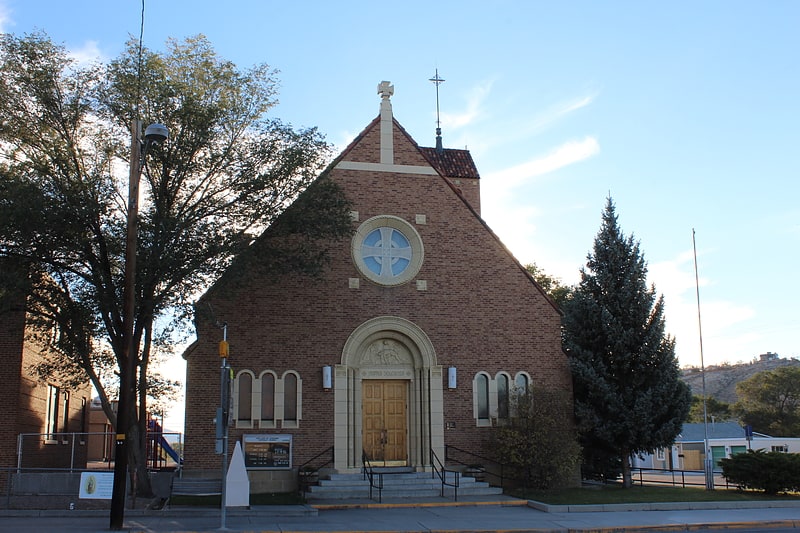
Catholic church in Rock Springs, Wyoming. The Our Lady of Sorrows Catholic Church of Rock Springs, Wyoming, on A at Broadway, was built in 1932. It was designed by Boston architects Maginnis and Walsh and its construction was run by supervising architect James Libby. Also known as South Side Catholic Church, it was listed on the National Register of Historic Places in 1997. It was deemed significant for its association with European immigrants to Rock Springs, especially the Irish; the church had a Polish counterpart Catholic parish on the north side of Rock Springs.[4]
Rock Springs Elks' Lodge No. 624
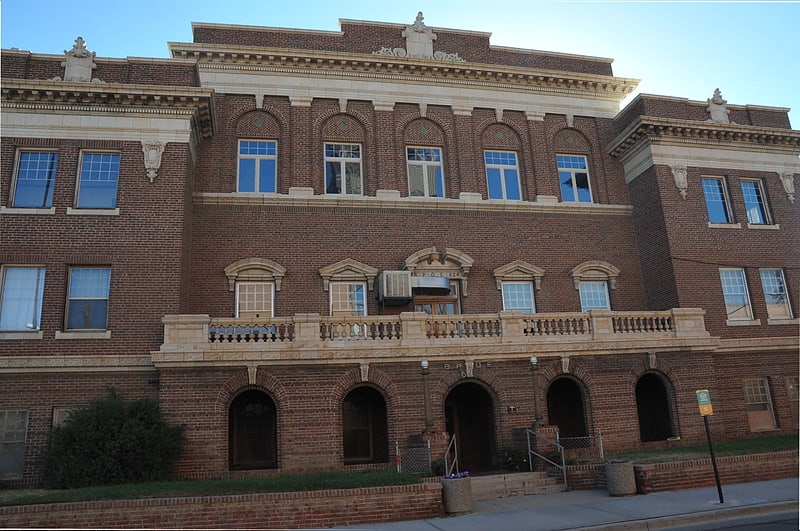
Fraternal organization in Rock Springs, Wyoming. Rock Springs Elks' Lodge No. 624, also known as Elks' Lodge and denoted 848SW7692, is a three-story 94 feet by 96 feet building at C and Second Streets in Rock Springs, Wyoming that is listed on the National Register of Historic Places. It was built in 1924 and is architecturally unique in the state. It was designed by D.D. Spani in Italian Renaissance style, using brick with terra cotta ornamentation.
It was listed on the National Register of Historic Places in 1983.[5]
Slovenski Dom
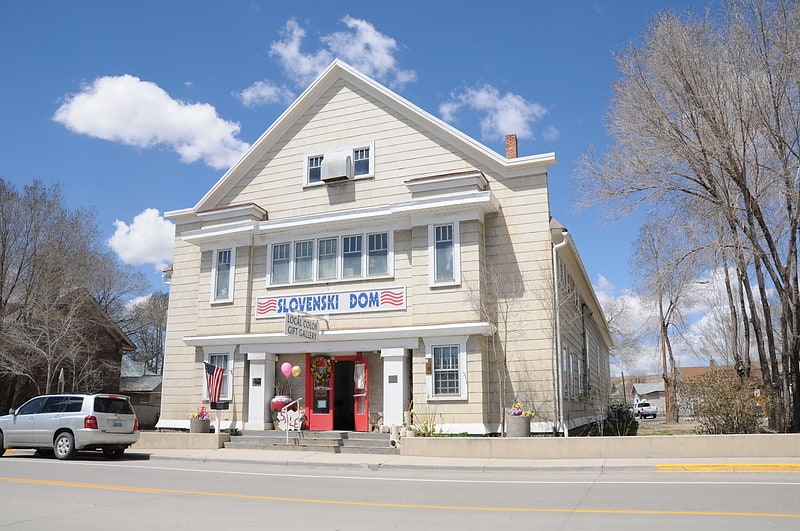
Gift shop in Rock Springs, Wyoming. The Slovenski Dom in Rock Springs, Wyoming was built as a community hall for Slovenian fraternal organizations in 1913. The Slovenski Dom, or Slovenian National Home, was one of a number of similar halls built in places with large ethnic Slovenian populations. The organizing charter stipulated that the hall be known as the "Slovenski Dom", its name in Slovenian, rather than by its English translation. It is the only example of its kind in Wyoming and was placed on the National Register of Historic Places in 1997.[6]
Taliaferro House
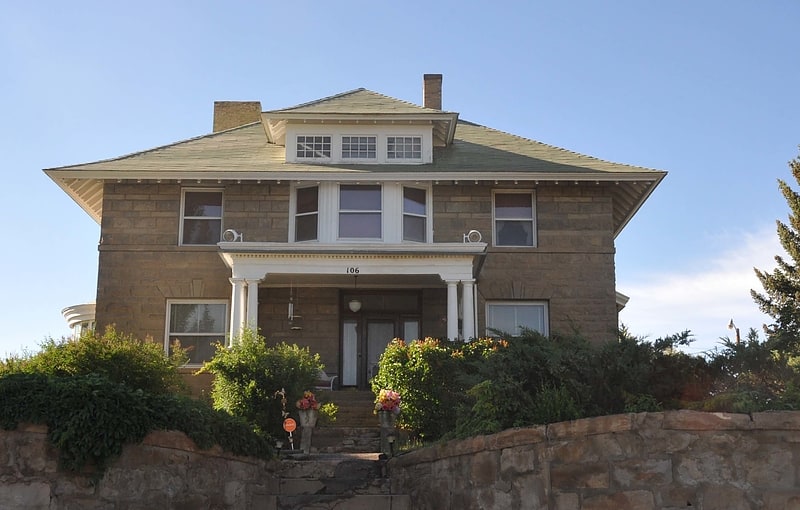
Building in Rock Springs. The Taliaferro House, at 106 Cedar St. in Rock Springs, Wyoming, was built in c. 1907–1912. It was listed on the National Register of Historic Places on March 31, 1998; the listing included two contributing buildings.[7]
Wardell Court Historic Residential District
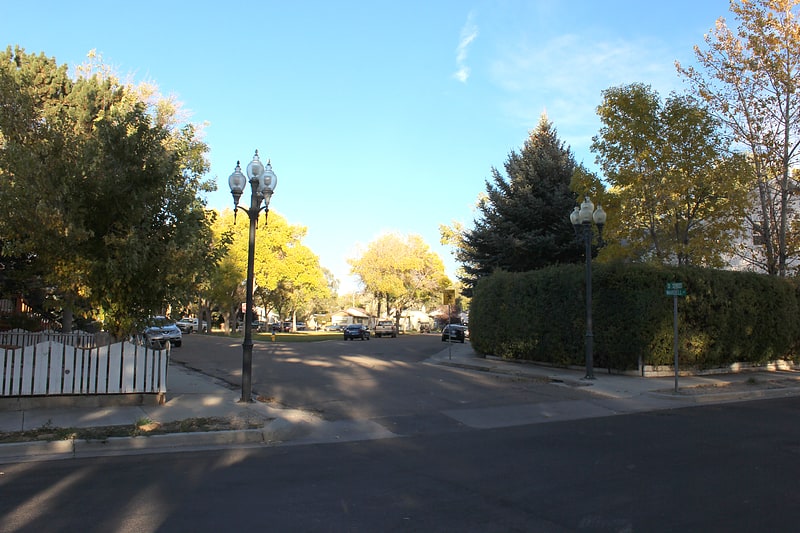
The Wardell Court Historic Residential District in Rock Springs, Wyoming is a 5-acre historic district that was listed on the U.S. National Register of Historic Places in 1997. It included 14 contributing buildings and six other buildings in a one-block area. These are all the buildings of a Wardell Court planned community that was formed by the Union Pacific Coal Company during 1920 to 1921 to house company officials. It includes Colonial Revival, Greek Revival, and Bungalow/craftsman architecture.[8]
Gras House
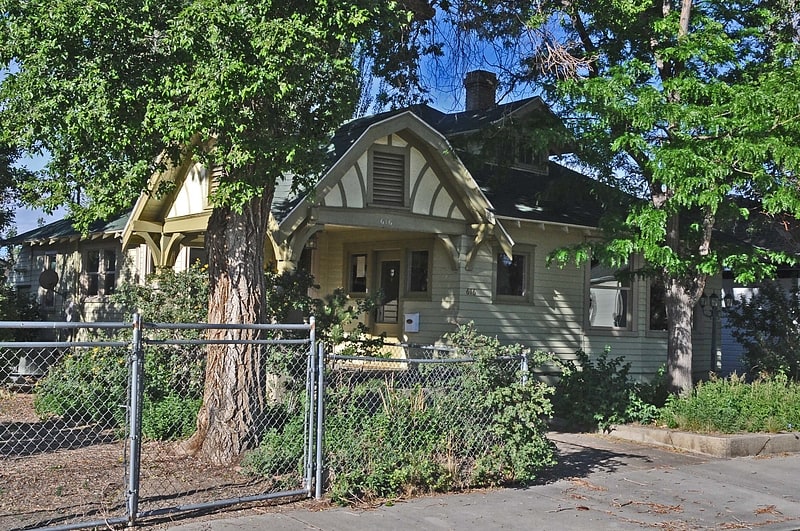
The Gras House, at 616 W. Elias in Rock Springs, Wyoming, is a Bungalow/craftsman house that was built in 1913–14. Also known as the Boucvalt—Gras House, it was listed on the National Register of Historic Places in 1986.
It is significant as one of the earliest bungalow houses built in Rock Springs, of architecture that evolved and suited what was a "growing and solid middle class."[9]
First National Bank Building
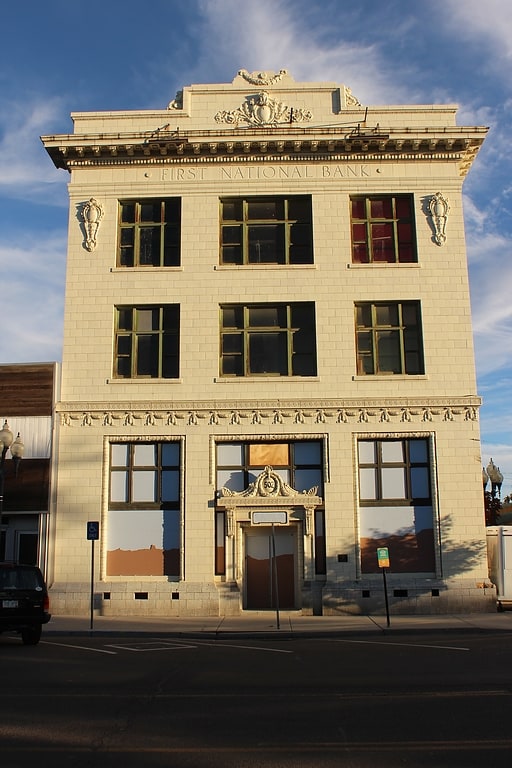
Building in Rock Springs, Wyoming. The First National Bank Building, at 502 S. Main St. in Rock Springs, Wyoming, is a historic building built in 1917. Also known as Security Bank Building, it was listed on the National Register of Historic Places in 1980.
It is notable for "its dominance" of the skyline and architecture of Rock Springs; the building includes "the most elaborate use of terra cotta in southwestern Wyoming". It was designed by Walter J. Cooper and D.D. Spanni.
In the fall of 2020, a complete renovation of the building began. It will accommodate an array of commercial uses, with retail and office spaces.[10]
Downtown Rock Springs Historic District
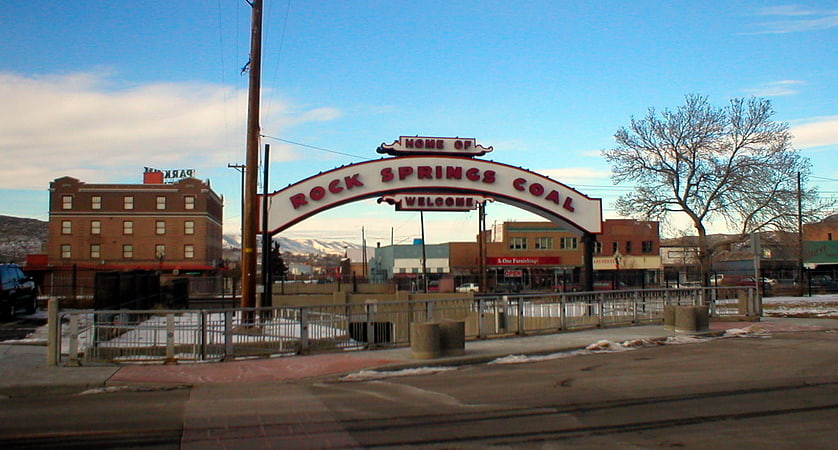
The Downtown Rock Springs Historic District is a 15.97-acre historic district that was listed on the National Register of Historic Places in 1994. It is roughly bounded by K, 4th, C, 2nd, A, and 5th Streets in downtown Rock Springs, Wyoming.
The district was site of the 1885 Chinese Massacre.
It included 27 contributing buildings and 18 non-contributing buildings. Two properties were already separately-listed on the National Register.
Contributing buildings include:
- Park Hotel (1914-15), 19 Elk Street, designed by D.D. Spani
- First National Bank Building, now known as First Security Bank, separately listed on the NRHP
- City Hall, separately listed on the NRHP